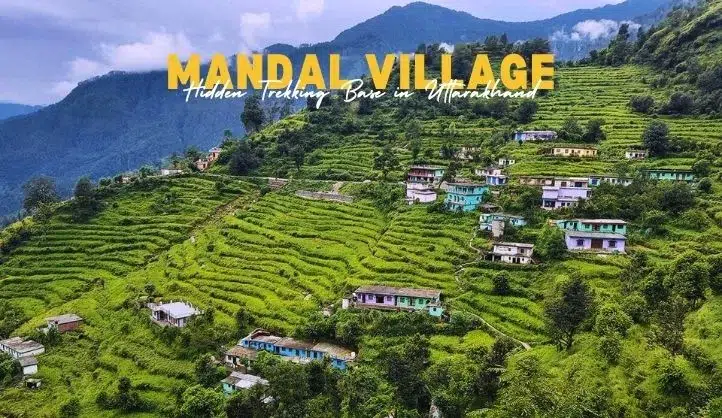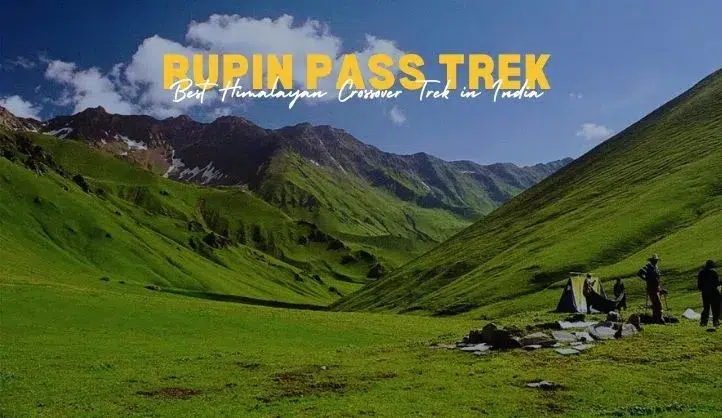Introduction
Welcome to the world of Nanda Devi National Park! Imagine a place where towering mountains touch the sky and colorful flowers bloom like a rainbow. This special park is like a treasure chest of nature, full of surprises and wonders. Let’s take a journey to discover the magic of Nanda Devi.
The Magnificence of Nanda Devi
- Majestic Mountain: Nanda Devi, standing tall at 7,816 meters, is the second-highest peak in India.
- Protected Sanctuary: Nanda Devi National Park was established in 1982 to preserve its unique ecosystems.
Nature’s Color Palette
- Vibrant Flora: The park boasts a rich variety of colorful flowers, including rhododendrons and primulas.
- Diverse Fauna: Snow leopards, Himalayan tahr, musk deer, and the Himalayan monal are among the many animals found here.
People and Their Stories
- Cultural Significance: Indigenous communities like the Bhotias and Rung have a deep connection to the park.
- Spiritual Haven: The sacred Nanda Devi peak attracts pilgrims for the annual Nanda Devi Raj Jat Yatra.
Conservation Efforts
- Preservation: Conservation organizations and the Indian government work to protect the delicate ecosystem.
- Balancing Act: Sustainable tourism practices are promoted to ensure harmony between nature and visitors.
Navigating Nanda Devi National Park: A Guide to the Map
Best Time to Visit Nanda Devi, National Park
Spring (April to June):
This is a magical time when the park comes alive with a riot of colors. The snow begins to melt, revealing a carpet of vibrant wildflowers. The weather is pleasant, making it ideal for trekking and wildlife spotting.
Summer (June to August):
If you’re an adventure enthusiast, summer is the perfect season for you. The snow recedes further, and the meadows are in full bloom. It’s the best time for treks, especially the famous Valley of Flowers trek.
Monsoon (July to September):
While monsoon brings rain, it also brings a sense of renewal to the park. The mist-covered landscapes create an ethereal atmosphere, and the flora flourishes. Trekking can be challenging due to rain, but it’s a unique time to witness the park’s rejuvenation.
Autumn (September to November):
Autumn blankets the park in hues of red, orange, and gold. The foliage provides a stunning contrast against the snow-clad peaks. The weather remains pleasant, making it another excellent window for trekking and exploration.
Winter (December to March):
Winter turns the park into a serene wonderland. The entire landscape is covered in snow, offering a breathtaking spectacle. While the park is closed to visitors during this time, you can still admire its beauty from a distance.
To summarize, the best time for visiting Nanda Devi National Park largely depends on your preferences:
- If you love vibrant blooms and mild weather, visit in spring.
- For adventure seekers, summer offers trekking and vibrant landscapes.
- Monsoon is for those who appreciate the park’s renewal and misty charm.
- Autumn is ideal for colorful vistas and pleasant weather.
- Winter enthusiasts can enjoy the frozen beauty from afar.
How to Reach Nanda Devi, National Park
By Air:
The nearest airport to Nanda Devi National Park is Jolly Grant Airport in Dehradun. From the airport, you can hire a taxi or take a bus to reach Joshimath, a major town near the park.
By Train:
Rishikesh is the closest railway station to Nanda Devi National Park. From Rishikesh, you can hire a taxi or take a bus to reach Joshimath.
By Road:
Joshimath serves as the base for treks to the park. You can reach Joshimath by road from various cities in Uttarakhand. Buses and shared taxis are available from places like Rishikesh, Haridwar, and Dehradun.
From Joshimath:
From Joshimath, the main trekking route to the park starts. You can take a shared taxi or hire a private vehicle to get to Lata village, the starting point of the trek.
Trekking to the Park:
The trek to Nanda Devi National Park starts from Lata village and passes through picturesque landscapes, charming villages, and dense forests. The trek requires a permit, and it’s recommended to hire a local guide for a safe and enriching experience.
Important Tips:
- Plan your transportation, especially during peak tourist seasons, as availability may be limited.
- The road conditions can be challenging in some areas, so be prepared for a bumpy ride.
- Altitude sickness can be a concern, so give yourself time to acclimatize before starting the trek.
- Check the weather conditions before your journey and pack accordingly.
Why Nanda Devi National Park is Famous?
Nanda Devi National Park has earned its reputation as a sanctuary of pristine natural beauty and awe-inspiring landscapes. Nestled in the lap of the Indian Himalayas, this UNESCO World Heritage Site is renowned for several remarkable features that make it a destination of unparalleled allure:
Biodiversity Hotspot:
The park’s rich biodiversity is a source of fascination for scientists and nature enthusiasts alike. It houses a diverse range of flora and fauna, including rare and endangered species. The park’s isolation and varied altitudes contribute to its unique ecological makeup.
Floral Diversity:
The park is famous for its extraordinary variety of alpine flowers, especially during the summer months. The Valley of Flowers, a part of the larger park, showcases a mesmerizing profusion of colors that form a breathtaking floral carpet against the backdrop of towering peaks.
Spectacular Landscapes:
The rugged terrain of Nanda Devi National Park boasts a stunning array of landscapes, from lush meadows and dense forests to glacial valleys and snow-clad peaks. This diversity creates a visual tapestry that appeals to adventurers and photographers alike.
Nanda Devi Peak:
The park’s namesake, Nanda Devi, is the second-highest mountain in India and a revered religious site. Its snow-covered peak, reaching over 7,800 meters (25,600 feet), is an iconic symbol of the park’s majesty.
Valley of Flowers:
A world-famous attraction within the park, the Valley of Flowers is renowned for its surreal beauty. Its vibrant meadows are adorned with a wide range of wildflowers that bloom in a riot of colors, creating a captivating visual spectacle.
Untouched Wilderness:
Nanda Devi National Park is celebrated for its pristine wilderness and relatively untouched landscapes. The park’s restricted accessibility has contributed to its preservation, allowing visitors to experience nature in its most unspoiled form.
Trekking and Adventure:
The park offers an array of trekking routes that cater to both seasoned trekkers and beginners. The trails wind through varying terrains, offering an opportunity to immerse oneself in the beauty of the Himalayas and connect with nature in a profound way.
UNESCO World Heritage Site:
The recognition as a UNESCO World Heritage Site underscores the park’s global significance in terms of biodiversity and natural beauty. This accolade has brought international attention to the park’s conservation efforts.
Spiritual Significance:
Nanda Devi holds spiritual importance for the local communities. The park is intertwined with myths and legends, and its peaks are considered sacred by various cultures.
Photography Paradise:
The park’s breathtaking vistas, diverse flora, and serene landscapes make it a paradise for photographers. Every corner offers a unique and mesmerizing frame that captures the essence of nature’s grandeur.
Exploring Nearby Attractions
Nanda Devi National Park is not only a destination of natural splendor but also serves as a gateway to several nearby attractions that add depth to your journey. Here are some captivating places you can explore while visiting the region
Auli: Skiing Paradise
Auli, located just a few hours away from Nanda Devi National Park, is renowned for its winter sports and ski resorts. The panoramic views of the Himalayas, coupled with thrilling skiing opportunities, make Auli a must-visit destination for adventure enthusiasts.
Badrinath Temple: Spiritual Sojourn
Situated on the banks of the Alaknanda River, the Badrinath Temple is one of the holiest pilgrimage sites for Hindus. Dedicated to Lord Badrinath, this temple attracts devotees from across the country. The stunning backdrop of snow-capped peaks adds to the spiritual ambiance.
Valley of Flowers: Floral Extravaganza
If you’re a nature lover, extending your trip to the Valley of Flowers is a fantastic idea. This UNESCO World Heritage Site is famous for its stunning variety of alpine flowers that bloom during the summer months. The vibrant colors and breathtaking landscapes create a paradise for botany enthusiasts and photographers.
Hemkund Sahib
High-Altitude Sikh Shrine
Hemkund Sahib, a revered Sikh shrine, is situated near the Valley of Flowers. Surrounded by seven snow-clad peaks, this sacred site is accessible through a challenging trek. The serene lake and the gurudwara (Sikh temple) provide a unique spiritual experience.
Narsingh Temple: Ancient Marvel
Located in Joshimath, the Narsingh Temple is an ancient Hindu temple dedicated to Lord Narsingh, an incarnation of Lord Vishnu. The temple’s intricate architecture and historical significance make it a place of cultural interest.
Chopta:Mini Switzerland
Often referred to as “Mini Switzerland,” Chopta is a charming hill station known for its serene beauty and lush meadows. The area offers excellent trekking trails and stunning views of the surrounding mountains.
Mana Village: First Village on the Indian-Tibetan Border
Visit Mana Village, the First village on the Indian side of the border with Tibet. This remote village is known for its unique culture, local handicrafts, and the Vasudhara Falls.
Tapovan: Meditative Retreat
Tapovan is a high-altitude alpine meadow known for its serene atmosphere and the chance to engage in meditation and yoga. The area offers splendid views of the surrounding peaks.
Conclusion
Nanda Devi National Park is a haven of natural beauty and cultural significance. With its diverse flora, magnificent fauna, and captivating landscapes, it stands as a testament to the wonders of the Himalayas. Let’s cherish and protect this treasure for generations to come.
Fun Questions to Answer
1. When was Nanda Devi National Park created?
Nanda Devi National Park was created in the year 1982.
2. What is the tallest mountain in Nanda Devi National Park?
The tallest mountain is Nanda Devi, which is 7,816 meters high.
3. What is the special walk that people do in the park?
People do the Nanda Devi Raj Jat Yatra, a special walk to show their love for Nanda Devi.
4. What are some animals you might see in the park?
You might see snow leopards, musk deer, and Himalayan monal birds.
5. Why is it important to take care of the park?
Taking care of the park helps keep the plants, animals, and the whole ecosystem happy and healthy.









